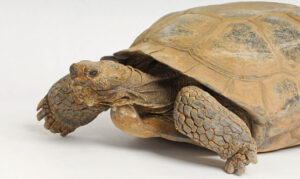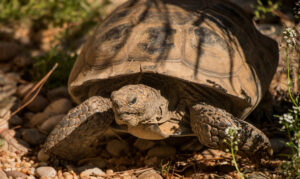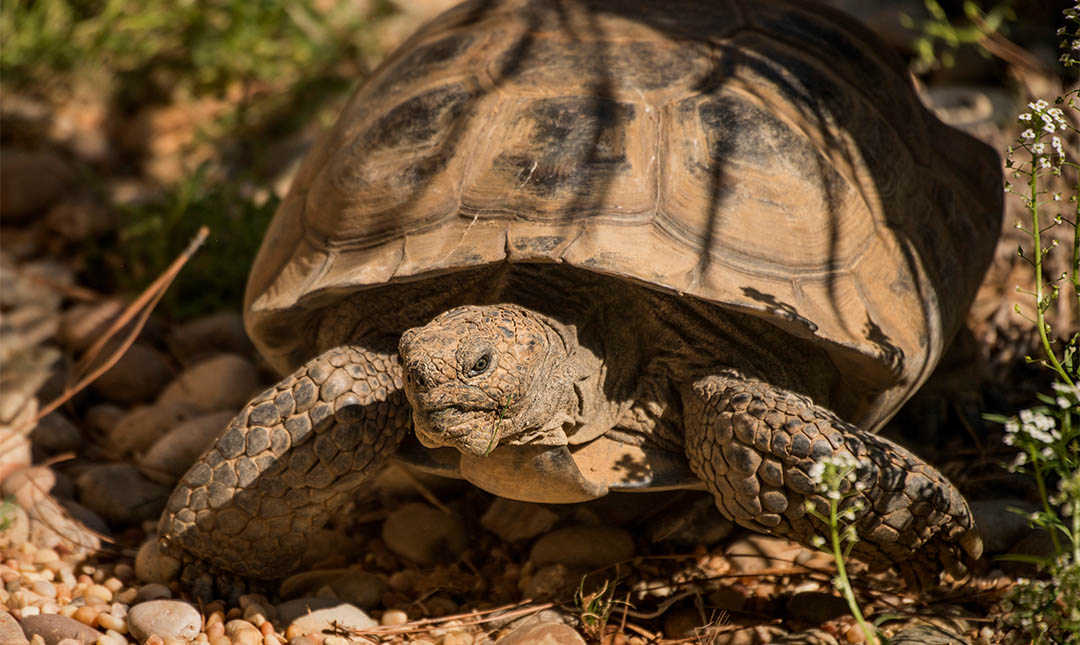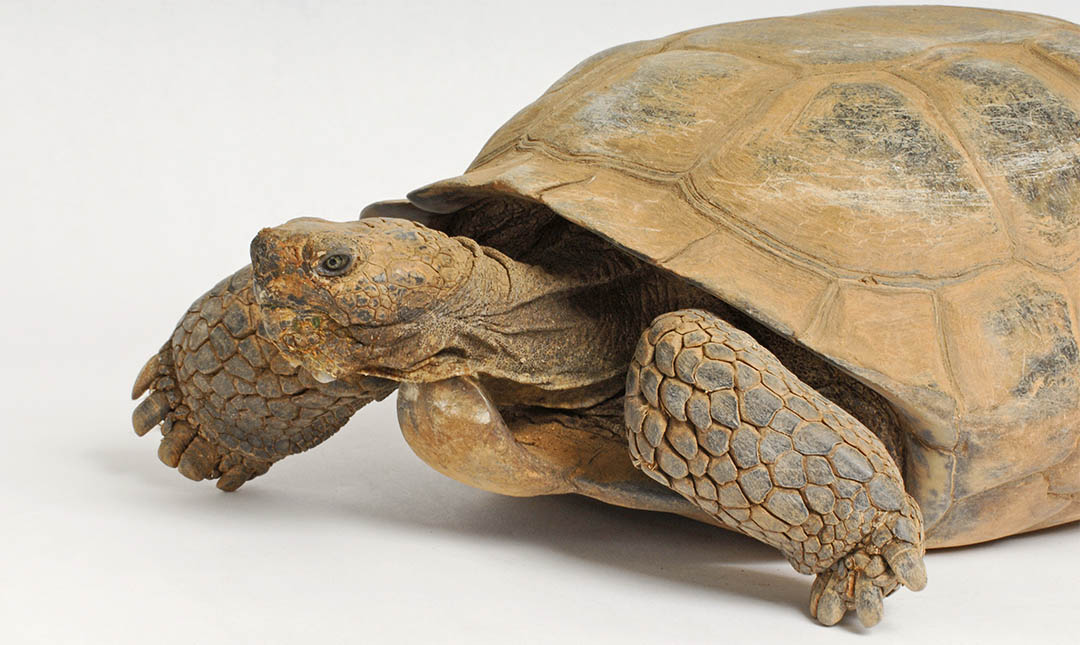About
California’s official state reptile is the largest reptile in the Southwestern states and native to the Mojave and Sonoran deserts. Surviving in habitat where summer temperatures can reach 110 degrees Fahrenheit or more requires special adaptations. A mature desert tortoise can go an entire year without drinking by obtaining necessary moisture from the grasses, flowers, fruit, and cactus it eats.
Like other reptiles, desert tortoises rely on external conditions to regulate their body temperature, so they bask in the sun to warm up and seek out shade to cool down. When temperatures hit extremes, desert tortoises will wait them out in a state of slowed metabolism that is similar to hibernation in mammals. Desert tortoises use their shovel-like front limbs and claws to dig shallow burrows in sandy soil when seeking shelter from both heat and cold. These burrows can be 3 to 30 feet long. Short tunnels provide temporary shelter, while long tunnels are dens with large chambers. Dens are used for periods of dormancy in winter (called brumation) as well as in summer (called estivation). Multiple tortoises may share the dens during these periods of hibernation. Desert tortoises may spend 95 percent of their lives underground.
A desert tortoise’s hard, thick, domed shell provides protection from predators such as bobcats, foxes, badgers, and coyotes. Their heads can be completely withdrawn into their shells and covered with their thick, scaled forelimbs. When they venture out at night to feed, they can move at a rate of up to 26 feet per minute for short periods and may cover up to a mile a day.
If you see a tortoise in the wild, it is important not to pick it up. Desert tortoises store extra water in their bladders and draw on this supply when no water can be found. A frightened tortoise will “void” its bladder, losing its emergency water supply. This could have life-threatening consequences for the animal. Desert tortoises are protected under the Endangered Species Act, and handling wild tortoises is illegal. Humans are the biggest threat to desert tortoises. Other threats include illegal collection for the pet trade, collisions with vehicles on highways or with ATVs, habitat loss, and ravens, who often proliferate near human development and readily feed on desert tortoise hatchlings. Even people with the best intentions who release pet tortoises to the wild can cause serious harm by introducing diseases acquired while in human care to wild populations.


Status
This species is classified as Endangered under the California Endangered Species Act. Except for relying on their hard shells, or crawling into the burrows they have dug, they are defenseless. Newly hatched tortoises are especially at risk. Their natural predators are bobcats, foxes, badgers, and coyotes. But humans are their biggest enemies, whether capturing them (illegally) for the pet trade, running over them on the highway or with off-road vehicles, or even shooting them. Even humans trying to do the “right thing” by returning pets to the wild can cause serious harm by introducing diseases acquired in captivity to the wild population.
Habitat
Desert tortoises inhabit sandy, gravelly areas in the deserts of the southwestern U.S. Shade provided by creosote bush, thorn scrub, and cacti is essential.
Diet
This herbivorous reptile eats available desert plants such as cacti and grasses. They do not have teeth. Instead, they have a beak-like mouth to bite off their food.
Physical Characteristics
Body length ranges from nine to 15 inches, and weight ranges from eight to 15 pounds, with the shell comprising 30 percent of total weight. Lifespan in the wild is typically 35 to 40 years, but in human care these tortoises can live between 50 and 80 years.
LOCATION WITHIN THE ZOO
You’ll find this animal in the Arroyo Lagarto section of the LAIR. See Zoo Map.


